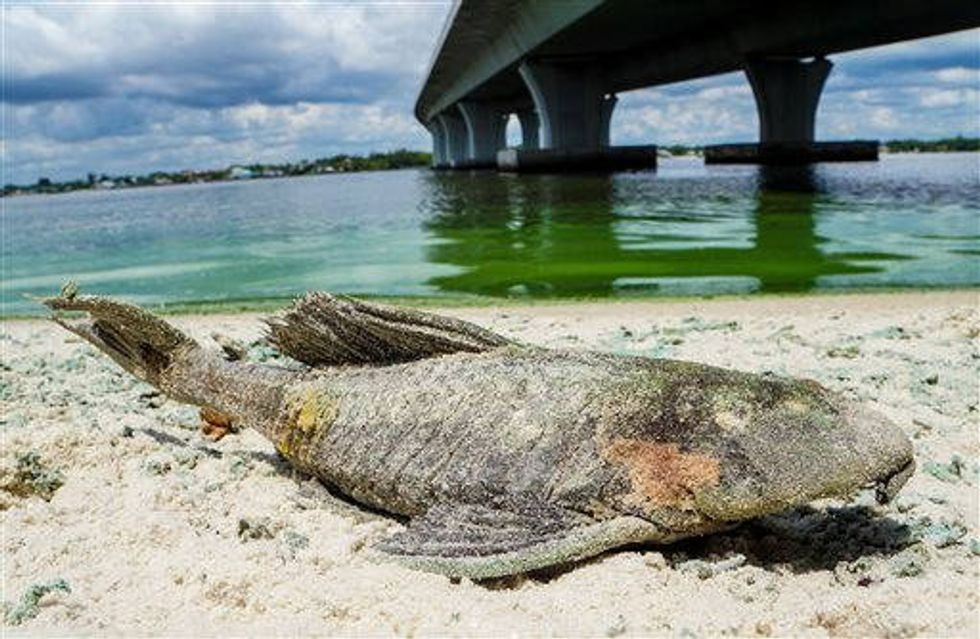South Florida is currently experiencing an environmental crisis that has received little to no attention outside of the affected areas. Martin, St. Lucie and Palm Beach Counties are all in the midst of a toxic algal bloom that is threatening the rich natural resources of the region and poses a threat to public health.
Lake Okeechobee, the largest freshwater lake in Florida, is the source of many of the canals and rivers that run to both the east and west coasts. The water level of the lake is regulated by a series of levies that controls the flow of water from the lake. Nutrient dense water from agricultural runoff collects in the lake. The recent algal bloom is the result of this runoff combined with high temperatures. Algal blooms have been found at the St. Lucy Lock and in several places in the St. Lucy River in Martin County.
A state of emergency has been declared in Martin County. Several beaches have been forced to close due to the presence of toxic algae.
The algal bloom will have a significant impact on the delicate ecosystem and wildlife that is unique to this area. While it is alive, the bloom will block sunlight to aquatic vegetation below the surface, causing it to rot and become inedible to sea life. The algae will also be consumed by fish and other animals and the toxins contained in it will become compounded as it travels up the food chain. Rotting matter will use up oxygen, which will in turn kill more fish and leave them to rot.
Swimming or drinking contaminated water can cause anything from a skin rash to respiratory problems to liver damage if the exposure is sustained over a long period of time.
For coastal communities that rely heavily on healthy waterways, algal blooms like this are more than a nuisance that keeps people from enjoying the beaches. Many people's livelihoods depend of the maintenance of healthy waterways, and current algal bloom will discourage the tourism that helps keep the area thriving. Even more importantly, it will have a detrimental impact on the wildlife and waters that residents enjoy daily. Marinas, summer camps and other coastal businesses are all feeling the effects of the algae bloom.




















